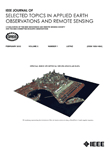
IEEE Journal of Selected Topics in Applied Earth Observations and Remote Sensing
metrics 2024
Exploring the Frontiers of Applied Earth Observations.
Introduction
IEEE Journal of Selected Topics in Applied Earth Observations and Remote Sensing is a premier peer-reviewed journal published by the IEEE-INST ELECTRICAL ELECTRONICS ENGINEERS INC, focused on advancing the field of Earth observation and remote sensing technologies. With an impressive impact factor, this journal ranks in the top quartile (Q1) for both Atmospheric Science and Computers in Earth Sciences, underscoring its significance and influence in the academic community. Open access since 2020, it facilitates broader dissemination of research findings to enhance global visibility and accessibility for researchers, professionals, and students alike. Spanning the years from 2008 to 2024, the journal covers a myriad of topics that highlight innovative applications of remote sensing data and technologies in addressing environmental challenges. With a Scopus ranking placing it in the 91st and 89th percentiles, respectively, in its categories, the journal serves as a vital resource for advancing scholarly discourse and collaboration in Earth sciences.
Metrics 2024
 1.43
1.43 4.70
4.70 5.00
5.00 126
126Metrics History
Rank 2024
Scopus
IF (Web Of Science)
JCI (Web Of Science)
Quartile History
Similar Journals

Geomatik
Advancing geomatics for a sustainable future.Geomatik is a pioneering open-access journal dedicated to advancing the field of geomatics, encompassing disciplines such as geospatial data analysis, remote sensing, and geographic information systems. Founded in 2016 by the esteemed Geomatik Journal publisher, this peer-reviewed platform aims to disseminate high-quality research and innovative methodologies to a global audience. With its E-ISSN 2564-6761, Geomatik facilitates accessibility to cutting-edge studies that address vital challenges in environment monitoring, urban planning, and spatial data management. The journal not only encourages collaboration among researchers and practitioners but also serves as an essential resource for students seeking to deepen their understanding of geomatic sciences. Its commitment to open access fosters scholarly exchange and enhances visibility for authors, contributing to significant advancements within the geomatics community.

Earth Science Informatics
Connecting Researchers to Propel Earth Science Innovations.Earth Science Informatics, published by SPRINGER HEIDELBERG, serves as a premier platform for disseminating innovative research in the realm of Earth and Planetary Sciences. With an ISSN of 1865-0473 and an E-ISSN of 1865-0481, this journal offers insightful contributions that leverage informatics and data-driven approaches to address complex geoscientific challenges. As a testament to its impact in the field, it ranks in the Q2 quartile and holds an impressive 73rd percentile rank among 195 journals in the broader **Earth and Planetary Sciences** category, as per Scopus rankings. This journal invites researchers, professionals, and students to explore and contribute to the growing body of knowledge that bridges the gap between informatics and Earth science, fostering advancements in both theoretical frameworks and practical applications. Situated in Germany, at TIERGARTENSTRASSE 17, D-69121 HEIDELBERG, it aims to enhance interdisciplinary collaboration and propel scientific discovery from 2009 to 2024 and beyond, reinforcing its vital role in the academic community.

Boletim de Ciencias Geodesicas
Connecting Researchers with Groundbreaking Geodetic InsightsBoletim de Ciências Geodésicas is an esteemed academic journal published by the Universidade Federal do Paraná within its Centro Politécnico. Focused on the dynamic field of Earth and Planetary Sciences, this Open Access journal has been a pivotal resource since 1997, fostering the dissemination of critical research and innovative methodologies. With an impact factor indicative of its relevance in the discipline, Boletim de Ciências Geodésicas ranks in the Q3 quartile for Earth and Planetary Sciences as of 2023, showcasing its commitment to quality scholarship in a competitive field. Researchers and students alike will benefit from access to cutting-edge findings, given its broad scope that encompasses various aspects of geodesy and related sciences. The journal's convergence of research from 2005 to 2024 ensures that it remains at the forefront of emerging trends and fundamental developments in the discipline, further enhancing its esteemed reputation in the academic community.
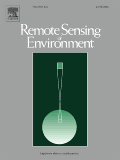
REMOTE SENSING OF ENVIRONMENT
Exploring the Earth, One Pixel at a Time.REMOTE SENSING OF ENVIRONMENT, published by Elsevier Science Inc, is a premier academic journal specializing in the interdisciplinary field of earth observation and remote sensing technologies. With an impressive impact factor and classified in the Q1 category for Computer Science in Earth Sciences, Geology, and Soil Science as of 2023, this journal serves as a vital resource for researchers, professionals, and students alike. The journal, which has been disseminating high-quality research since its inception in 1969, provides a platform for the exploration of innovative methodologies and applications in the assessment of environmental changes and resource management through advanced imaging techniques. While not an open-access journal, REMOTE SENSING OF ENVIRONMENT offers access options that make cutting-edge research accessible to its audience. Its strategic focus on critical issues pertaining to environmental monitoring and sustainable practices underscores its role in enhancing our understanding of the planet’s dynamics.

Remote Sensing in Ecology and Conservation
Leading the way in ecological research with remote sensing innovations.Remote Sensing in Ecology and Conservation is a pioneering journal published by WILEY that has been a beacon of open-access research since 2015. With an E-ISSN of 2056-3485, this journal stands at the forefront of the intersection between ecological research and technological innovation. It is recognized for its significant impact, boasting Q1 rankings across several prestigious categories in 2023, including Computers in Earth Sciences and Ecology, emphasizing its commitment to high-quality, influential scholarship. The journal provides a platform for researchers and practitioners to share their findings in remote sensing applications that advance ecological conservation efforts. Encompassing a broad scope that includes studies on landscape changes, biodiversity assessments, and environmental monitoring, it serves as an essential resource for education and practice in the field. With impressive ranks in Scopus, including a remarkable 6th place in Earth and Planetary Sciences, it continues to shape the dialogue in ecology and conservation. As an open-access journal, it champions the dissemination of knowledge, making critical research accessible to a global audience, thereby fostering innovation and collaboration in the pursuit of sustainable environmental practices.

Remote Sensing
Empowering Science with Open Access to Remote Sensing DiscoveriesRemote Sensing is a highly esteemed journal published by MDPI, dedicated to the domain of Earth and Planetary Sciences. With an impressive impact factor reflected in its rank of #16 out of 195 in the general Earth and Planetary Sciences category, this journal achieves a commendable 92nd percentile among its peers, indicating its significant contribution to the field. Since its inception in 2009 as an Open Access journal, it has enabled researchers, professionals, and students from around the globe to access high-quality, peer-reviewed articles that delve into the latest advancements in remote sensing technologies, methodologies, and applications. Based in Switzerland, Remote Sensing serves as a vital platform for disseminating innovative research that supports and enhances our understanding of Earth's processes and environments, ensuring scientific knowledge remains freely accessible and impactful.
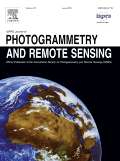
ISPRS JOURNAL OF PHOTOGRAMMETRY AND REMOTE SENSING
Advancing Geospatial Sciences through Innovative ResearchISPRS Journal of Photogrammetry and Remote Sensing is a prestigious publication at the forefront of the fields of photogrammetry and remote sensing. Established in 1989 and published by Elsevier, this journal has consistently maintained a strong academic standing, currently holding a top-tier Q1 ranking across multiple categories, including Atomic and Molecular Physics, Computer Science Applications, and Engineering. This reflects its vital contribution to advancing knowledge and technology in these dynamic fields. The journal is not only a vital resource for researchers and professionals but also serves as an essential academic platform for students keen on delving into the latest developments in geospatial sciences. The journal operates under a non-open access model, ensuring that submitted research adheres to the highest standards of scholarly communication and integrity. With an impactful focus, it brings innovative research, comprehensive reviews, and significant case studies to a global audience. The ISPRS Journal is crucial for those aiming to enhance their understanding and application of remote sensing techniques within various scientific disciplines.
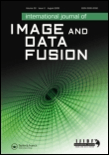
International Journal of Image and Data Fusion
Exploring the Synergy of Data and ImageryThe International Journal of Image and Data Fusion, published by TAYLOR & FRANCIS LTD, is a premier scholarly journal dedicated to the fields of computer science applications and earth and planetary sciences. With an ISSN of 1947-9832 and E-ISSN 1947-9824, this journal offers a unique platform for researchers, professionals, and students interested in the innovative integration of image processing and data fusion techniques. Operating from the United Kingdom, it plays a vital role in advancing knowledge and facilitating discussions in these rapidly developing domains, evidenced by its ranking within the Q3 category for Computer Science Applications and Q2 for Earth and Planetary Sciences in 2023. The journal features rigorous peer-reviewed content that spans from 2010 to 2024, encouraging the dissemination of novel research findings and methodologies. With a notable impact factor and strong Scopus rankings, it remains an essential resource for those seeking to enhance their understanding and application of sophisticated data fusion technologies in their academic or professional work.

Applied Geomatics
Connecting disciplines through rigorous research in geomatics.Applied Geomatics is an esteemed academic journal published by SPRINGER HEIDELBERG, dedicated to advancing the field of geomatics through rigorous research and innovative applications. With an ISSN of 1866-9298 and an E-ISSN of 1866-928X, this journal has gained a prominent standing in multiple disciplines, achieving a Q2 ranking in esteemed categories such as Earth and Planetary Sciences, Engineering, Environmental Science, and Geography. The journal's convergence of research from 2009 to 2024 positions it as a vital resource for both scholars and practitioners seeking to understand and leverage geomatic technologies in real-world scenarios. Located in Germany, Applied Geomatics not only contributes to theoretical advancements but also to practical methodologies that address current environmental challenges. Its accessibility and relevance ensure that the findings discussed within its pages are pivotal for professionals, researchers, and students alike, fostering collaboration and innovation within the field.
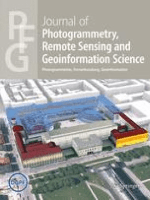
PFG-Journal of Photogrammetry Remote Sensing and Geoinformation Science
Advancing Knowledge in Photogrammetry and Remote SensingPFG-Journal of Photogrammetry Remote Sensing and Geoinformation Science, published by Springer International Publishing AG, stands as a prestigious peer-reviewed journal at the intersection of cutting-edge technology and the vital disciplines of Earth and Planetary Sciences, Geography, and Instrumentation. With an impressive impact factor and ranking within the Q1 category, this journal regularly publishes innovative research, methodologies, and case studies that drive advancements in the field. As of its converged years from 2017 to 2024, the journal focuses on the latest trends in photogrammetry, remote sensing, and geoinformation science, providing a crucial platform for researchers, professionals, and students alike. Its open access model ensures that findings are widely accessible, fostering collaboration and knowledge dissemination throughout the global scientific community. Located in Switzerland, geographical and technological diversity is embraced, making the PFG Journal an essential resource for those dedicated to exploring the complexities of our planet and contributing to sustainable development.